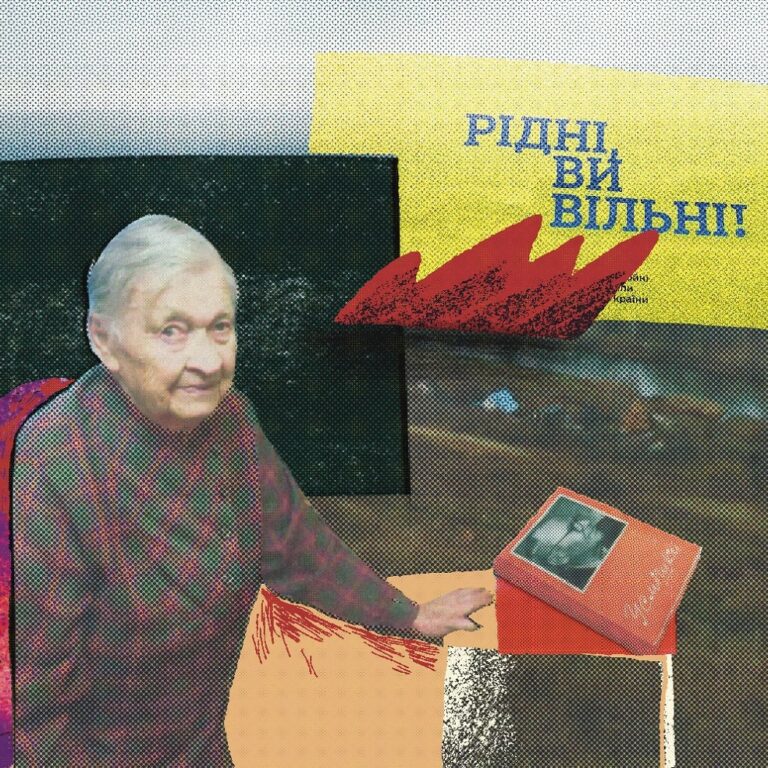
Along with the joyful news about the de-occupation of Izium, Slobozhanshchyna, in September 2022, the whole world became aware of the following heinous crimes committed by the Russians: dozens of tortured people and mass burials, from which 447 bodies were exhumed. This is how the world saw Izium.
But over the past 80 years, the city has twice become a battlefield, and some of its residents were under occupation twice in their lifetimes, consequently waiting for liberation twice. There still remain remnants of the bridge built by the Nazis, buildings that have already survived one war and witnessed the current one, and, most importantly, there are still people who remember it.
Mariia Kapanina, who used to work as a teacher and librarian in schools #4 and #6, vividly remembers what Izium and its outskirts were like before and during WWII. The woman was born and raised on a farmstead near Izium that has since been abandoned, much like most such settlements. 90 years ago, there were up to 30 houses; now, there are about 30 people. On February 23, 2022, Mariia celebrated her 92nd birthday with her family.
The author of this story was also born and raised in Izium. It was his first trip home after the city’s liberation in September 2022. He met Mariia accidentally when his friend asked him to bring her mother and grandmother a heater in Izium. Mariia was very grateful for his help and was very friendly. So they agreed to talk.
It fell to a 92-year-old woman both to survive WWII and the full-scale Russian-Ukrainian war. Having an exceptional memory, Mariia explains what is common and different between these murderous events.
Life between WWII and the Russian invasion
— I saw them a few times. I was standing on the balcony, and they (Russian occupiers — ed.) were distributing food downstairs. One of them came under the balcony and said to me, “We’ve brought soup, help yourself.” I didn’t go. I said, “Thank you very much, but I’ve cooked some soup myself.”
Mariia’s first contact with Russians was when they occupied Izium in the spring of 2022. These invaders were not the first ones in her life.
Mariia has two daughters. One left the city during the occupation, and the other still lives with her. Their apartment is calm and quiet, with only the wall clock ticking rhythmically. There are selected works by the legendary Ukrainian authors Ostap Vyshnia and Taras Shevchenko on the shelf next to Mariia’s armchair. “It’s a great pity for Ukraine,” the woman sighs and points out that Kobzar’s poems closely resemble the present.
Kobzar
Taras Shevchenko is one of the most famous Ukrainian intellectuals, writers and artists. The most important Shevchenko’s book is Kobzar (Ukrainian: Кобзар, "The bard"). After publishing this legendary book, the writer himself was nicknamed Kobzar.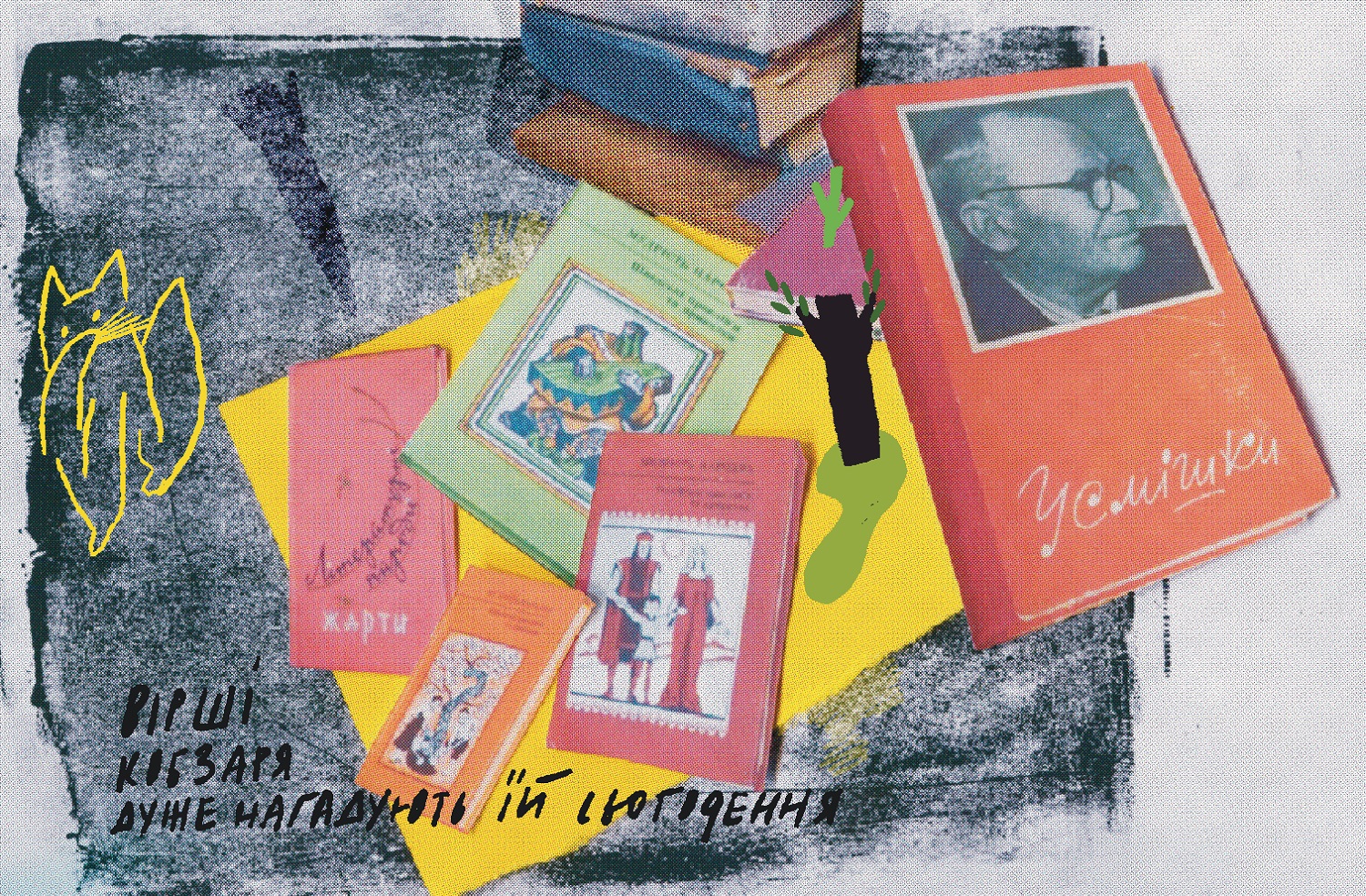
Kobzar's poems resemble the present to her very closely
During our two-hour conversation, it becomes clear that Mariia is blessed with almost phenomenal memory. She vividly remembers even the weather at the beginning of the Nazi occupation in 1942 and when the shooting stopped on May 9, 1945.
— I remember Kharkiv after the war; the ruins were still everywhere. In 1949, we went to clear the debris on clean-up days, right where the “Ukraine” cinema is located in Shevchenko Park now — Mariia recollects the post-war city.
In her story, the words “I remember” sound frequently. There is an age gap of about 70 years between us. Mariia’s story about the two wars is elaborated with the diary of the Russian-Ukrainian war kept by her daughters Natalia and Olena during the temporary occupation.
How the wars in Izium started
In 1941, Mariia finished the 4th grade. She lived in the village of Holubivka (now almost extinct) next to Izium with her grandparents. She heard about the beginning of the war from her grandpa:
— I remember the first days of the war very well. Grandfather delivered the mail to the villages and brought the news: the war broke out. There still was no radio back then, nothing. And he brought the first call-up papers. I also remember the first reports about the fatalities in the village.
Before the German occupation of the village, there were explosions in the area that destroyed the houses, while the farmstead itself was left without authorities. Soon, the occupiers arrived.
— In 1942, I remember how the Germans came. It was summer, it was so hot, and the sun was blazing… There was only one street in the village. So they came in threes on motorcycles with sidecars, in threes with accordions. They seemed exhilarated as they passed by. But after some time, on the same day, the cars came. They shouted: “Eggs, chickens!” and took everything from the houses…
While narrating this incident, Mariia closes her eyes and sighs heavily. She interrupts the story almost immediately as if she is afraid that she won’t have enough time to tell everything — there are so many things kept in her memory, so many painful, dreadful memories. Looting began with the occupation: the German occupiers took a boar away from Mariia’s family.
— And then they went into my aunt’s yard next door to catch chickens. A dog was running on a chain so they couldn’t get to the henhouse. They fired a shot at the dog. It is in agony, blood clotting, it ran to the barn into the pigsty (a place where pigs are kept. — ed.). I’ll never forget that.
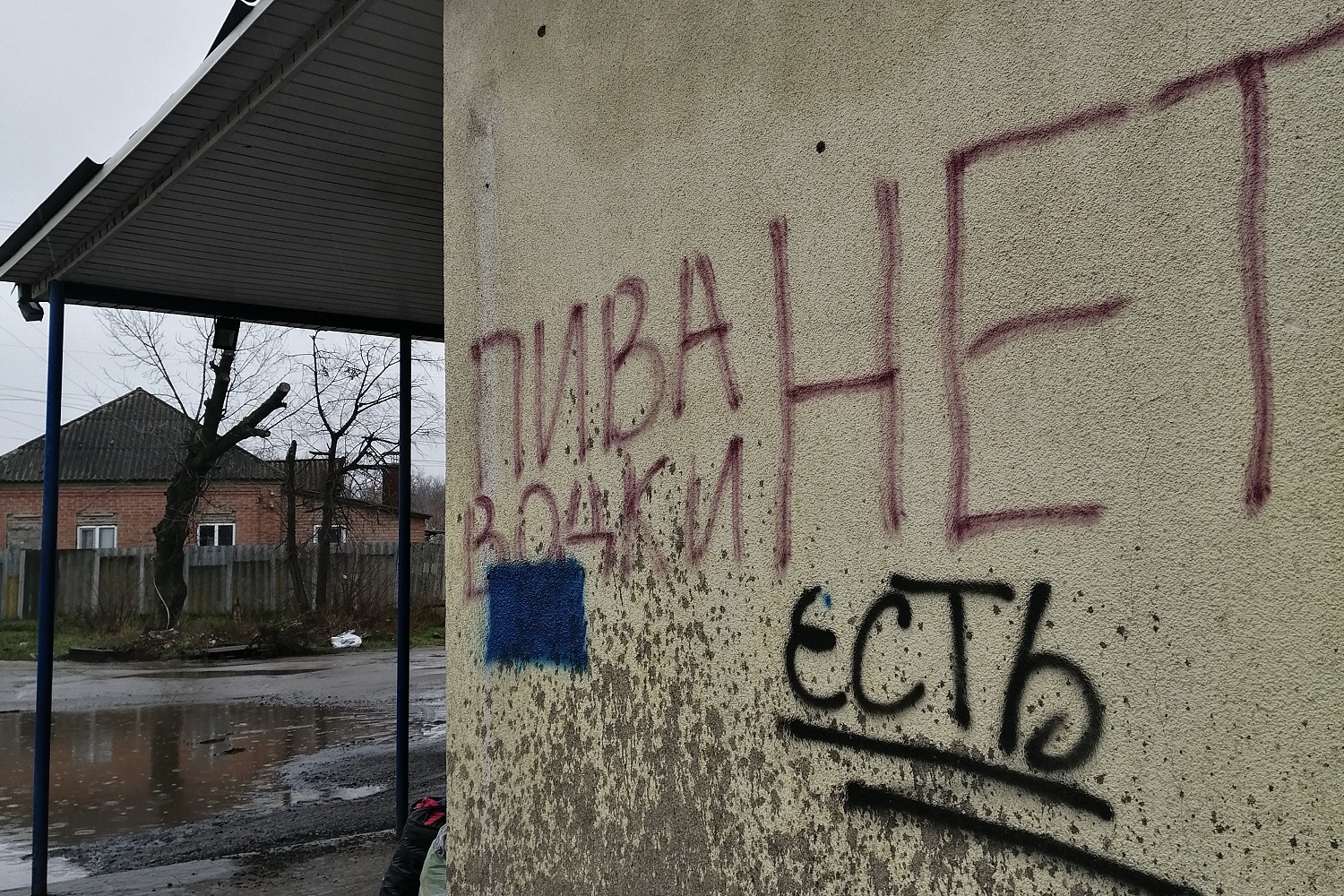
Photo provided by the author.
The occupation of Izium began alike 80 years later. The Russian military fired artillery shells onto the city on the night of February 26-27, 2022. It’s absurd, but the Russians have started “denazifying” the city centre’s first streets, like the one named after the hero of the USSR, pilot Captain Orlov, who fought over Izium. In a couple of days, Russian airstrikes began, which demolished the city’s residential quarters.
“They’ve been bombing the city. They blew up the police office. The medical school was on fire. At night, they shelled the centre, the building of the “Poliushko” store was on fire. The explosion was horrifying. We spent the rest of the night in the built-in closet in the hallway,” reads the first entry in the diary, dated March 2, 2022.
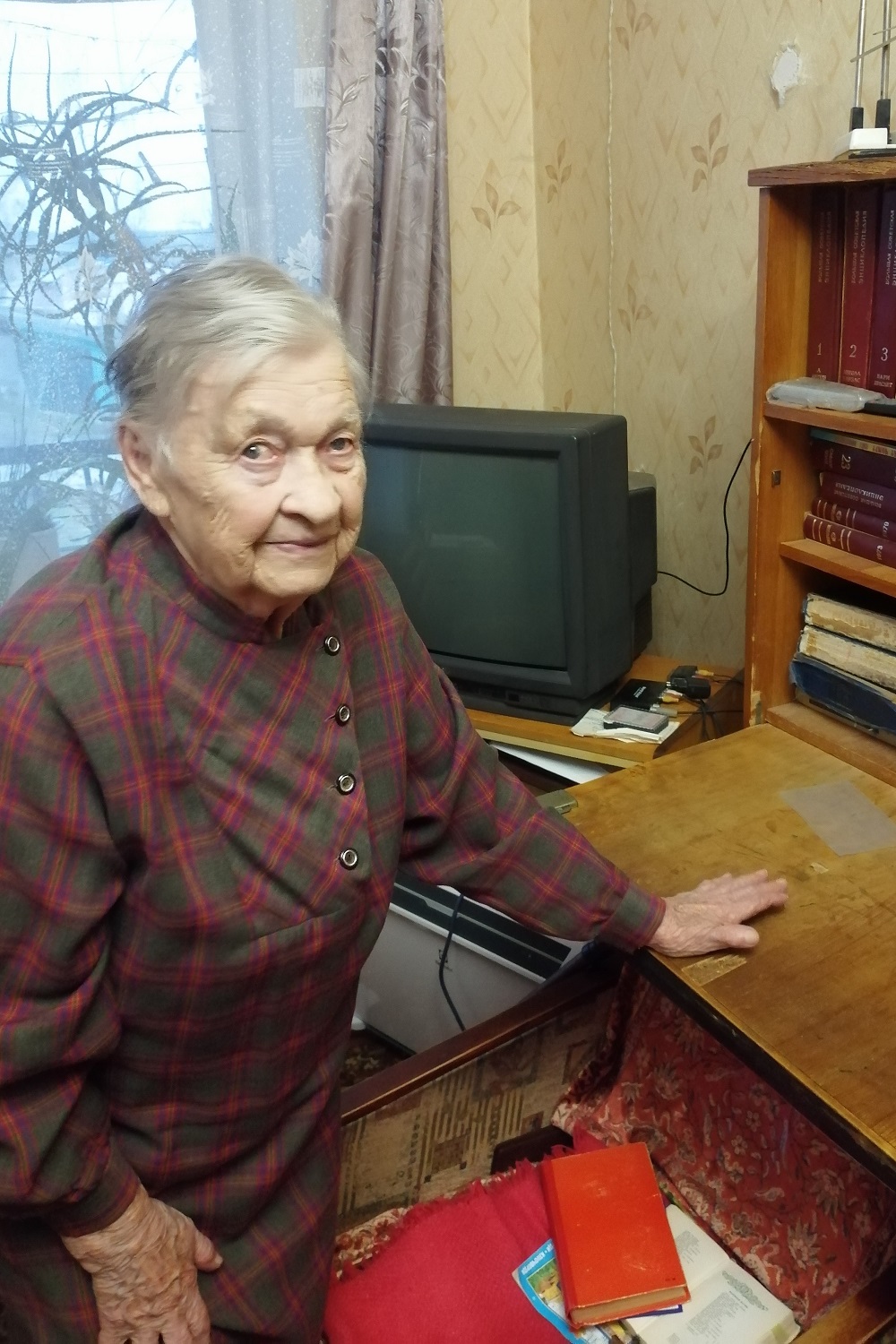
Photo provided by the author.
During WWII, Mariia lived in a small house with her grandmother, grandfather, uncles, aunts and their children, seven people altogether. Shelling occurred all around, but the village itself remained intact. The family woke up at sunrise (they had no clock), grandmother baked bread in the oven, and grandfather went to the windmill to grind flour.
Eighty years later, in 2022, Mariia faced the war again, this time also with her nearest and dearest daughters, who comforted and cared for her.
Both during the German and the current Russian occupation, Mariia was concerned with the lives of her relatives and animals. For instance, the woman says a grey cat came to her house last summer and settled there. Shortly after, the cat gave birth to kittens, and the family hid those in a hencoop next to the house. These days, there are always a bunch of multicoloured cats curling up near the porch. During the full-scale invasion, the number of abandoned animals on the streets of Izium increased. Once, I noticed a small black dog with a caramel-coloured muzzle next to a bakery, circling, scared to approach people, and even shuddering at the sound of a crunching waffle, which I wanted to feed it.
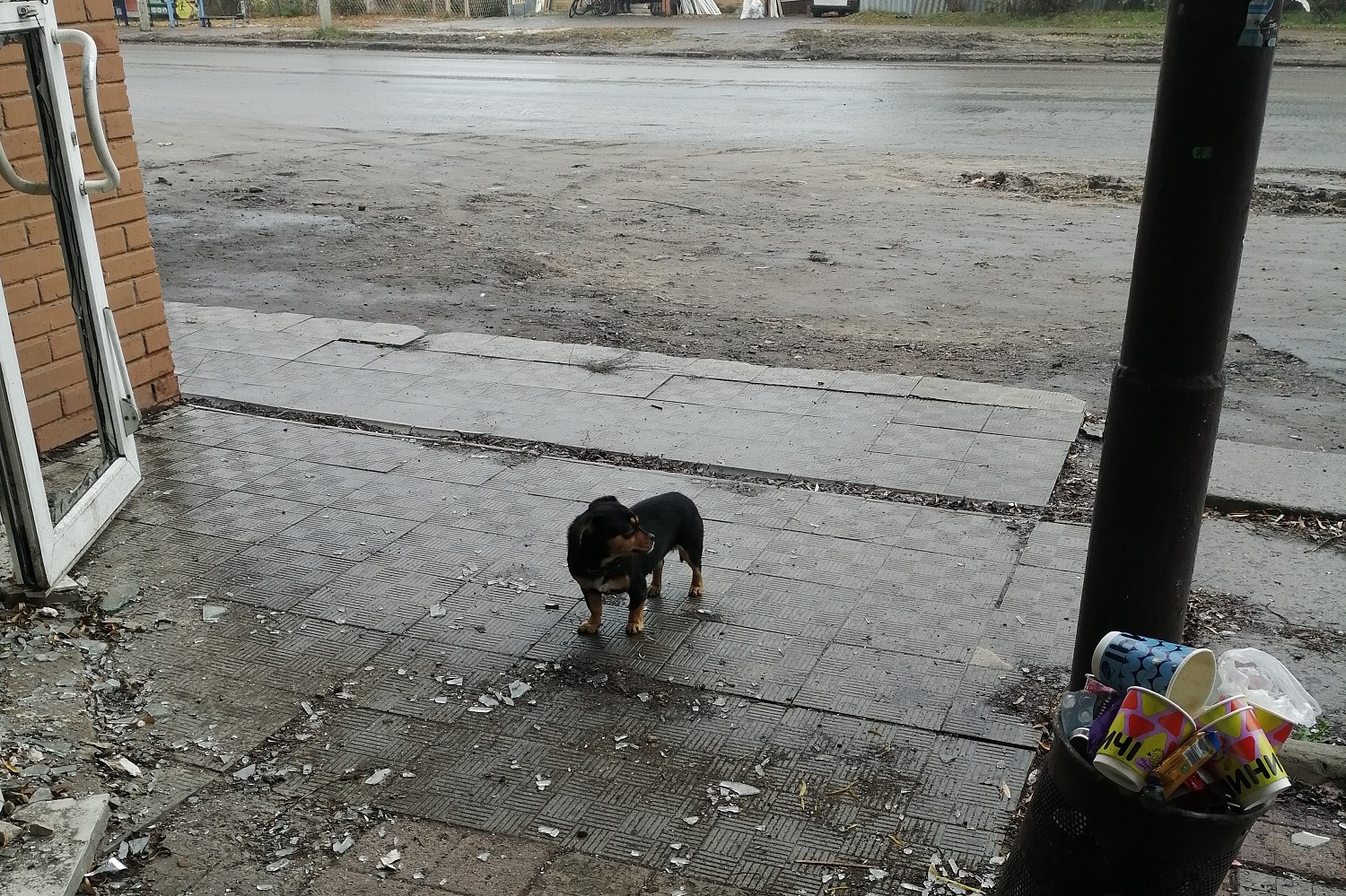
Photo provided by the author.
The light outside the window of Mariia’s apartment is fading. Adults pace bit by bit every few minutes, or children run along the street. During the war, at least 13,000 of them stayed here. Sometimes, an olive green pickup truck with a white cross on the door drives by — that’s Ukrainian military. Their cars make up the majority over here these days.
She continues her story, just stopping and asking occasionally: “Are you interested? Haven’t I tired you out?”
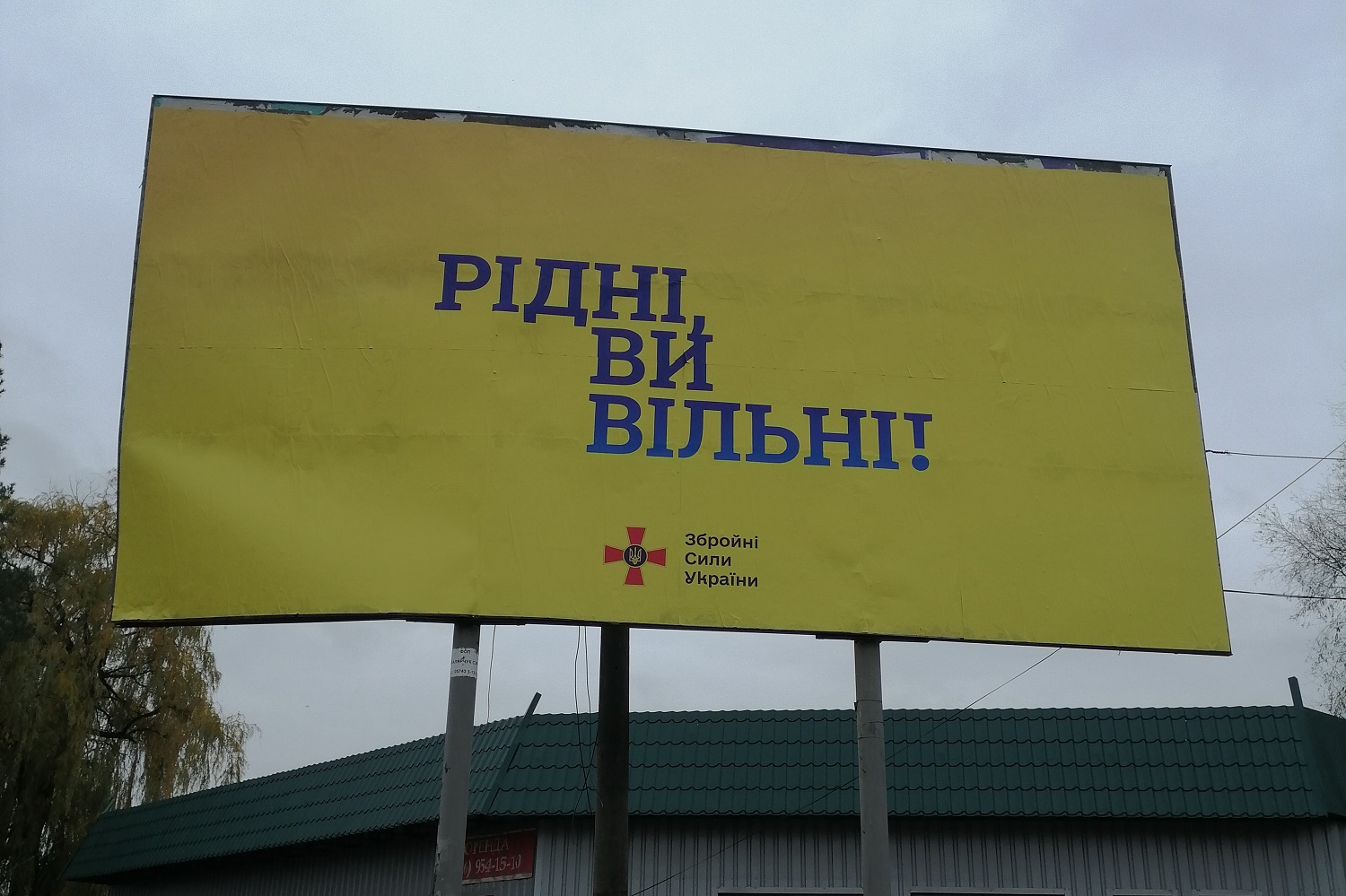
Photo provided by the author.
While discussing the modern war now, Mariia mentions WWII at once, as its wounds have not yet healed. Among other things, she talks about her father, who joined the army in July 1941. Until 1943, he fought near Moscow, and the family did not know whether he was alive. They hadn’t seen each other for two years.
— All of a sudden, one evening in late April 1943 right when the cherry trees started to bloom, he came. It turned out that he walked 50 kilometres from his military unit in Kupiansk to our place.
Mariia’s father suffered four serious injuries near Izium in a few months. In a single day, his arm was wounded, an enemy fragment got him under the shoulder blade, and a bullet punched out his calf. Another shell splinter shattered the kneecap on the other leg, causing the limb to be amputated. He spent a long time in a hospital in the village of Kantemyrivka in Poltavshchyna. To visit him, Mariia’s mother walked more than 200 km.
What’s been happening in Izium during the occupations
Airstrikes and missiles have caused the most significant destruction to Izium. Apartment blocks collapsed from aircraft bombs, burying whole families underneath. In March 2022, 54 people died under the five-storey building at Pershotravneva Street alone. Debris removal began here no sooner than a few months after the tragedy.
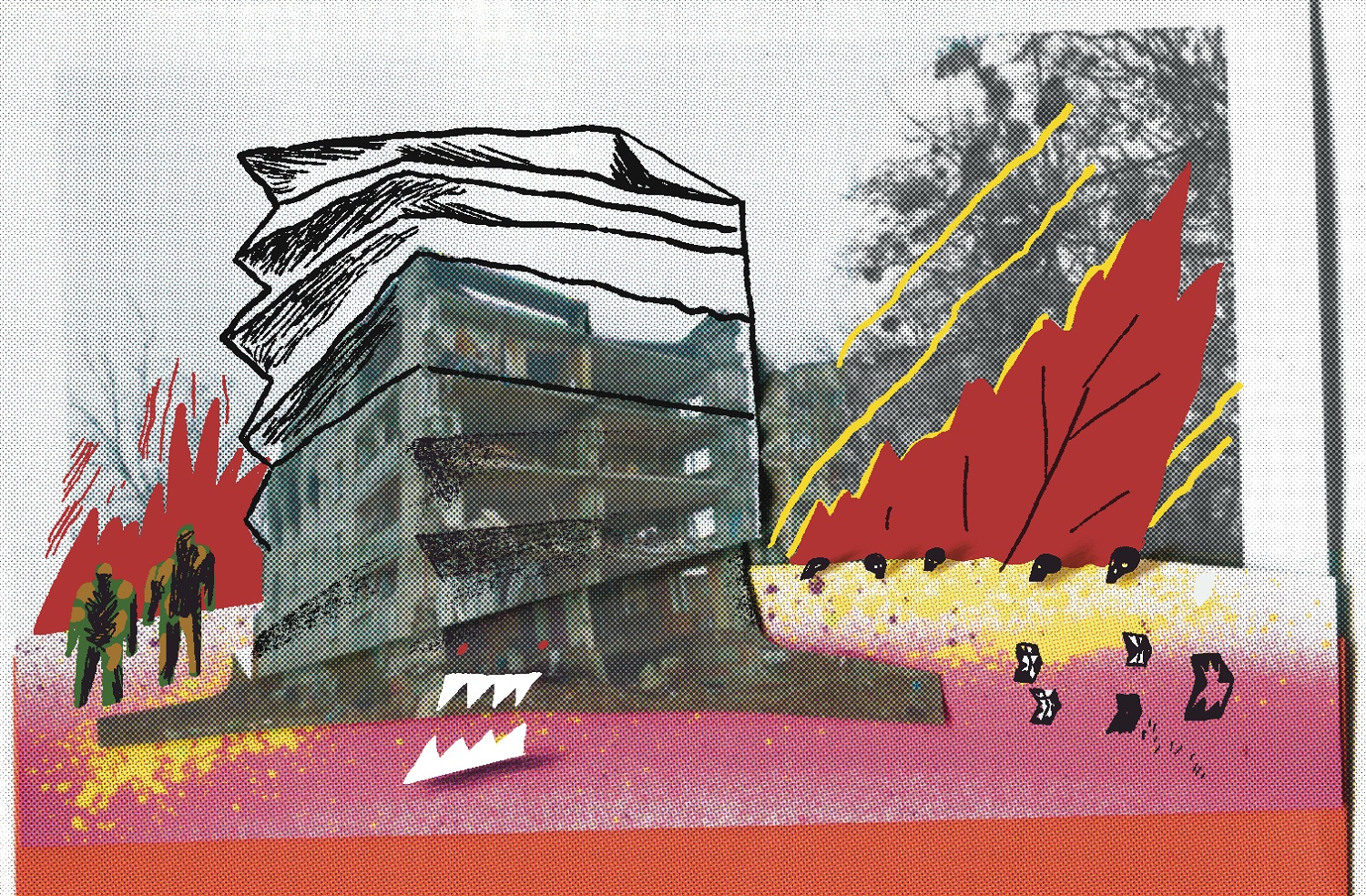
Izium and nearby settlements were destroyed by aeroplanes decades ago as well. The house where Mariia lived was next to the railway and was attacked by the Germans:
— We heard lots of explosions and saw many planes. Once, my mother and sister went to the vegetable garden, and I was in the yard. Special freight trains with evacuees were going to the east. Military ones were heading to the west, carrying tanks covered with tarpaulin. One day, the planes flew over and started firing machine guns! The train stopped, and they also kept shooting from there. Standing in the yard, I could even see the pilot: red-haired, wearing glasses. Where to run? I got inside, well… I stuck my head under the floor mat where the beets were stored. Then I felt my mother dragging my legs, and we went to the cellar.
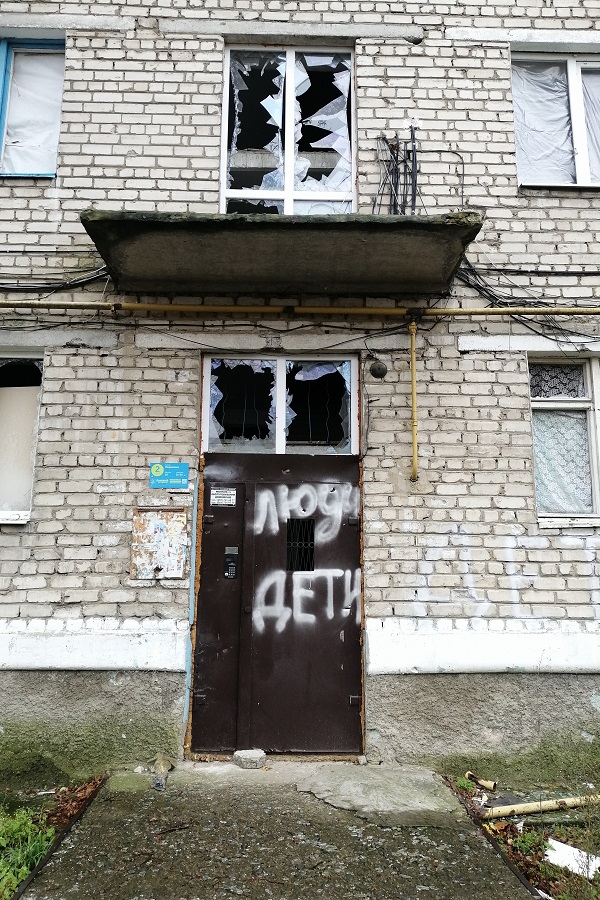
Photo provided by the author.
The house in Izium where Mariia lives now is already far from the railway, although it stopped almost from the beginning of the war due to the occupiers bombed it.
“The house at Chervonopraporna street (west of the city — ed.) was burning all night. Every bit of it has burned down. The sight is gruesome. We are sitting and recollecting whose apartments were there. It is very terrifying when you observe how life is being destroyed. We will not live as before,” reads a diary entry as of March 10, 2022.
Mariia shares many other vital chapters of her life between the wartime memories. Time and again, the family moved homes in the post-war years, and she mentions her first job in a library and the early years of her granddaughter’s life. It’s tangible how important it is for her to convey her “I remember.”
She recalls how she first came to work at school and, over the years, received the “Excellence in Public Education” award. At this point, her daughter brings us tea, and the room becomes noticeably warmer from the heating. In the winter of 2022, such a luxury as warm heating radiators was available to residents of less than half of all apartment blocks in the city. People mainly warmed themselves using small heaters.
Excellence in Public Education
An incentive award in the USSR granted to educators in 1945-1991.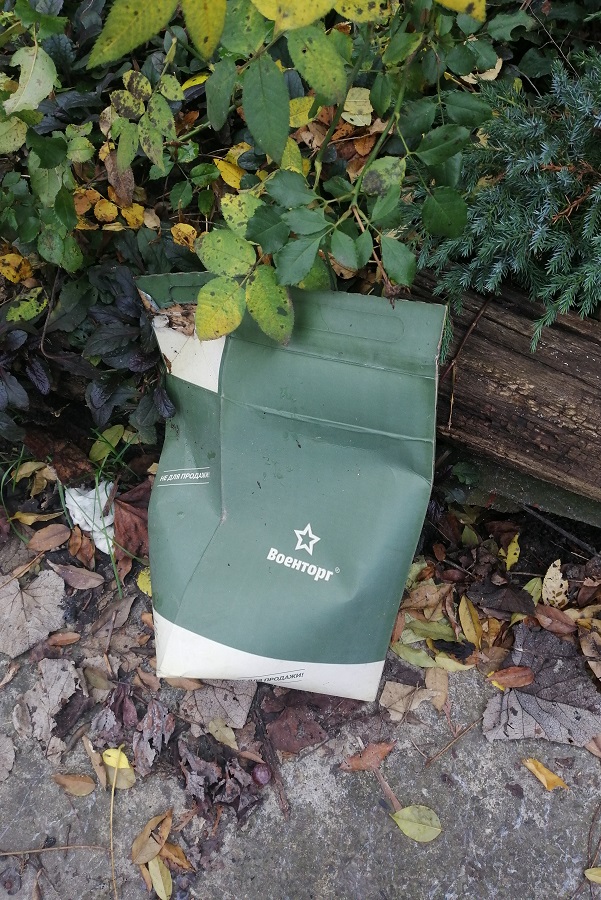
Photo provided by the author.
During the temporary occupation, Russian invaders moved into houses from which the city residents have been evacuated, and some have even been kicked out of their homes. All that remained in the surviving houses was a pile of rubbish and boxes from the Russian “Voyentorg” dry rations. A new wave of destruction blanketed the city when it became a “human shield” for the invaders. Russian military hid their equipment near the houses of the Izium residents to evade attacks of the Ukrainian Defense Forces.
“An armoured personnel carrier with soldiers stopped next to the water pump. We watched them out of the window. The soldiers started shooting, so we even scooched down in the hallway. It was the first time we’ve seen them up close near the house,” reads a diary entry as of March 8, 2022.
There were different occupiers in Izium, Mariia says. While particular could even give some food, others carried out raids and checked every apartment. The manhunt for pro-Ukrainian “dangerous” individuals throughout the city is only the tip of the iceberg of Russian war crimes. Only after the city’s liberation were torture chambers and executions of civilians revealed to the world.
The current war and victory
Mariia talks about the full-scale war aversely, with great pain in her voice; these memories are too fresh and full of different emotions. What hurts her the most is the betrayal of the locals, who lived next door for years and happily wished the Russians success.
— I am 92 years old now, and I probably haven’t cried as many tears in all the years as I have since February 24. I’m scared, I can’t…I realise that I’m a person of an older generation, but… There were such looters here. As early as February 24, ours were already plundering and breaking; there were no Russians in Izium back then!
Of course, not everyone turned out to be traitors. Mariia’s family and her neighbours swapped food, water and fire. Local rescuers brought milk and bread from nearby villages. Residents who started volunteering also have been helping: they brought food, even if they found themselves under shelling.
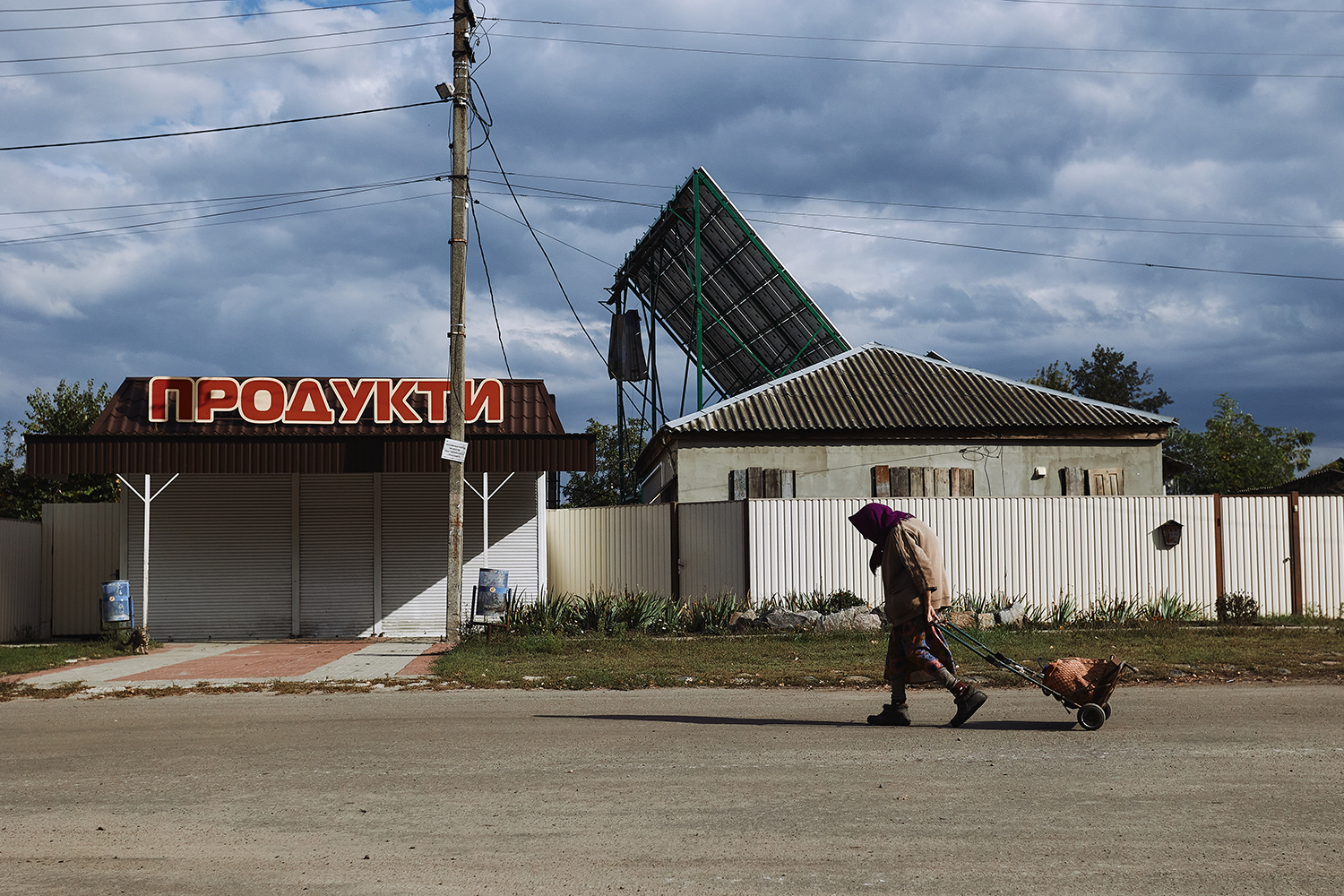
Photo: Victoria Iakymenko
The need to talk about war life and share the pain is what brings together and unites the locals. Many of them are also shocked while recalling the neighbours with whom they lived side by side for years, who then collaborated with the occupiers. Already after I had a word Mariia, on the way to the Izium railway station, a local resident Valeriy tells about it:
— Some put it in the sack, “snatched away” entire stores and even offered it to me. They said it is now possible because Russia will be here from now on. But I said that Russia would never be here.
He is about 40 years old and works as a taxi driver in an old car. In a few months after the liberation of Izium, such cars were the only means of transportation here. The first marshrutkas (local buses — ed.) launched services in the last days of 2022.
Perhaps it would not have been possible to completely occupy Izium if it were not for the collaborators. On March 1, 2022, the invaders occupied half of the city, divided by the Siverskyi Donets River. The centre was on the other bank and Kremenets hill, where the Ukrainian flag was flying.
One of the traitors was a local MP from the Russian-backed OPFL party and a communist Anatoliy Fomichevskiy. He will be tried in absentia for having shown the occupiers the way to the city.
OPFL
A pro-Russian political party "Opposition Platform — For Life." Banned in Ukraine from 2022.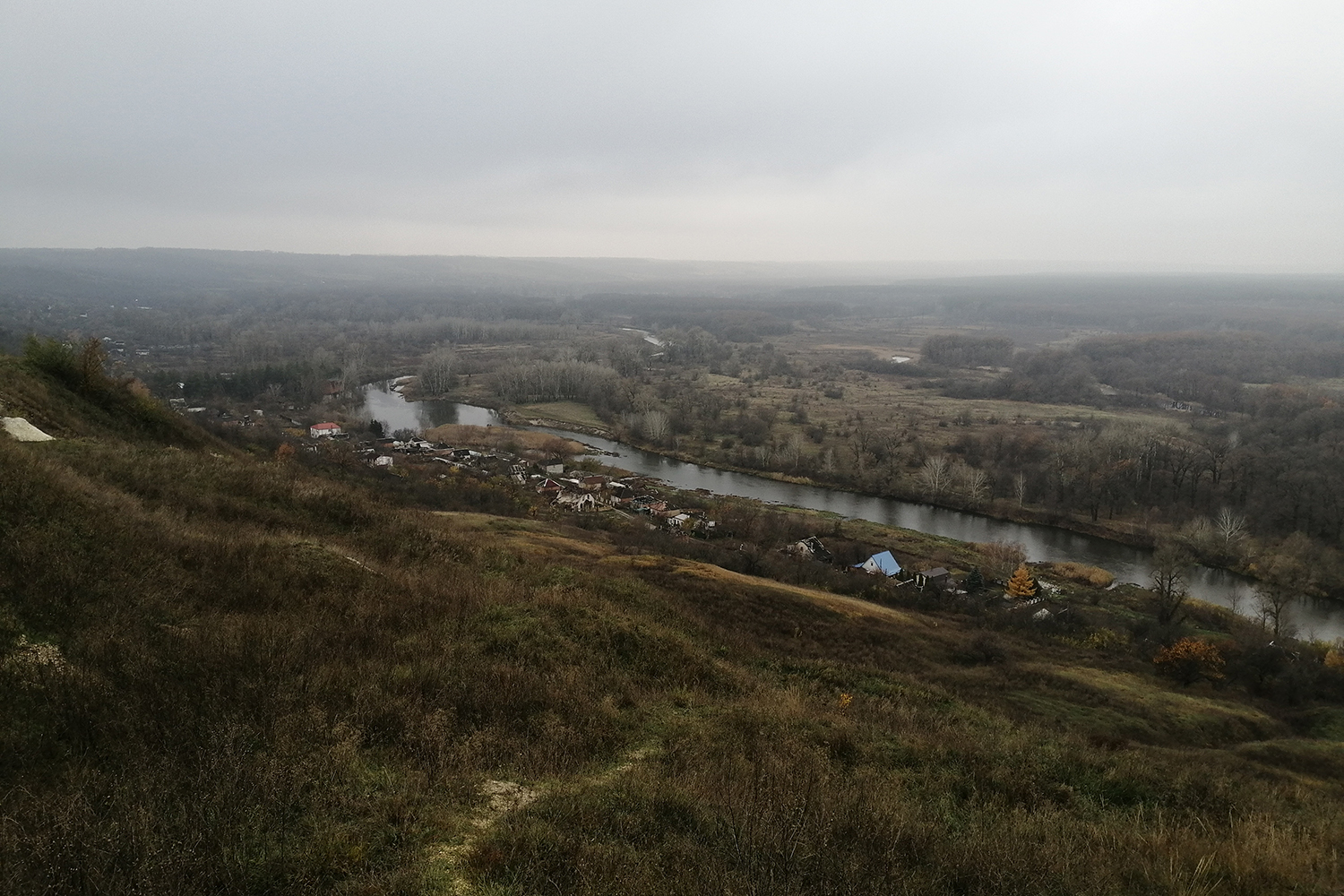
Photo provided by the author.
However, many Izium residents resisted the Russians, even during the temporary occupation. Locals joined the territorial defence forces, became partisans, and supported their people as much as possible. For instance, it is known that Izium partisans conducted a raid that destroyed ten occupiers. There were also the braves who hid Ukrainian flags and even flew them boldly in the last days of the occupation.
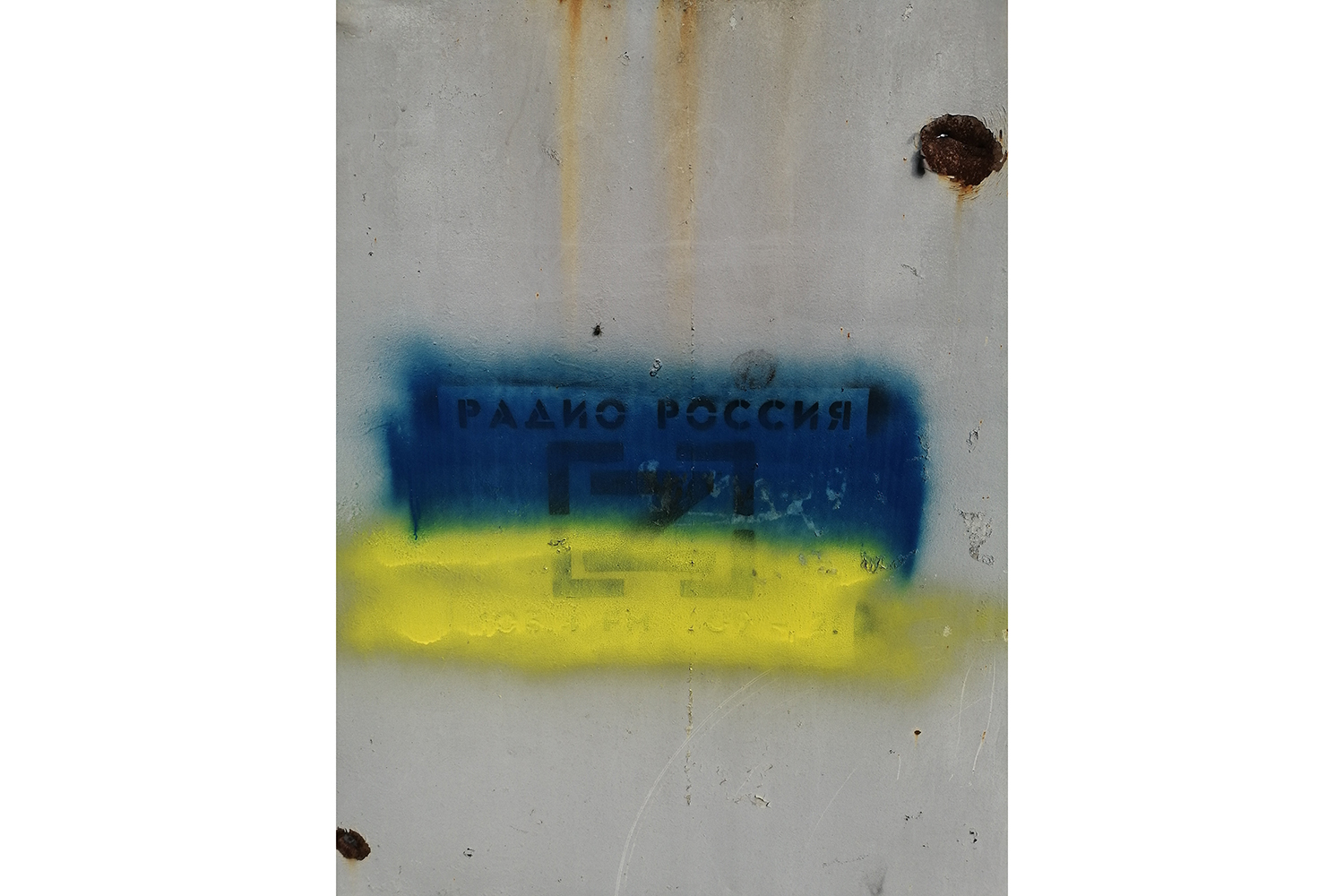
At the end of WWII Mariia’s family lived in the village of Buhaiivka about 40 kilometers from the centre of Izium. This is how the woman recollects the day the war ended:
— I was in the sixth grade. I remember this day, May 9, 1945. There was a little rain. We woke up: there was sun and such freshness! Such warmth, as if nature was smiling. And we watched as people ran to the center of the village. We reached it, and there was a spontaneous rally. The head teacher of the school, Ivan Tymofiiovych, spoke there, he lost his leg in the war. I best remembered his speech. He said, “Children, you are joyful now, your parents and your brothers will come back soon. And some among you are standing and realising that theirs will never return.” And there was an outcry, tears, and laughter at once — it was hair-raising. That’s how victory came.
The atmosphere in Izium was completely different 80 years later, the day before the Russian military escaped. Mariia says that before leaving the city the occupiers announced a curfew for a week. The noise of the continuous movement of vehicles came from the main road.
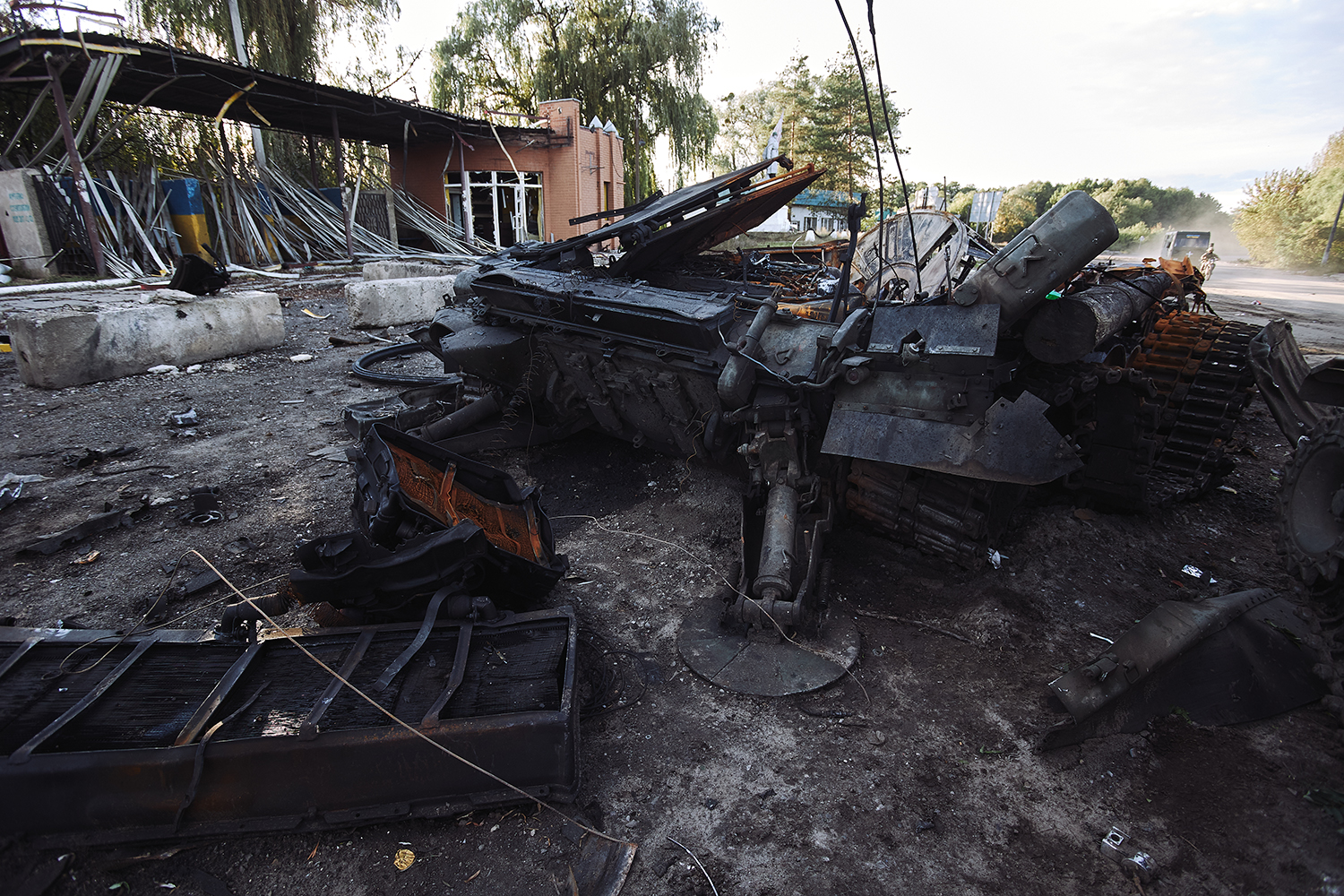
Photo: Victoria Iakymenko.
“Disturbing. The whole day, there were bursts; apparently, another ammunition depot was hit. People can’t be seen — they have hidden, and the street is empty. There is no gas. They cooked on the stove — it takes an hour to boil water and make coffee. In the evening, a woman ran by and said the road was covered with “butterfly” mines. Cars are driving and driving along the highway; we can’t see where, we can only hear.
…The shooting and explosions do not stop at night. There is an ongoing noise of cars and armoured vehicles along the highway. Trucks are dragging cannons towards Kharkiv. Next to “Kharchivnia” (a restaurant. — ed.), there is a column of armoured personnel carriers and cars…”, — reads a diary entry as of September 9-10 (days before the liberation of Izium).
“Butterfly” mines
This is a Soviet-made PFM-1 anti-personnel blast mine, and its shape resembles a butterflyThe full-scale war has changed the meaning of some words that are heard in Izium. Some townsmen mean the city’s liberation when they say “victory”. And the expression “on the mainland” describes cities that haven’t suffered occupation.
I asked Mariia if she was happy when the Ukrainian military entered the city. She only asked in confusion, as if the answer to this question was obvious. She definitely does not lack words to describe her feelings – instead, there are too many of them, so much that it is difficult to tell them quickly. One thing is clear – she was indescribably happy:
— From the 9th to the 10th [of September 2022], a mine fell near the house — and people only discussed this. And the next day, it fell right in the yard. The neighbour’s windows were shattered. And we only had a crack in the kitchen window. Maybe because I’ve been waiting for our people? I’ve been waiting so much, how else?
“OURS ARE IN TOWN!!! The first armoured personnel carriers and tanks drove past the energy sales company, OURS!!! Tears of joy, emotions. And a little sad: yesterday, there was an incoming strike to our yard. The plastic frame was damaged in the kitchen – there was a hole. Thank God the wall is intact. I felt relieved. There is hope that Ukraine will be back,” reads a diary entry as of September 11, 2022.
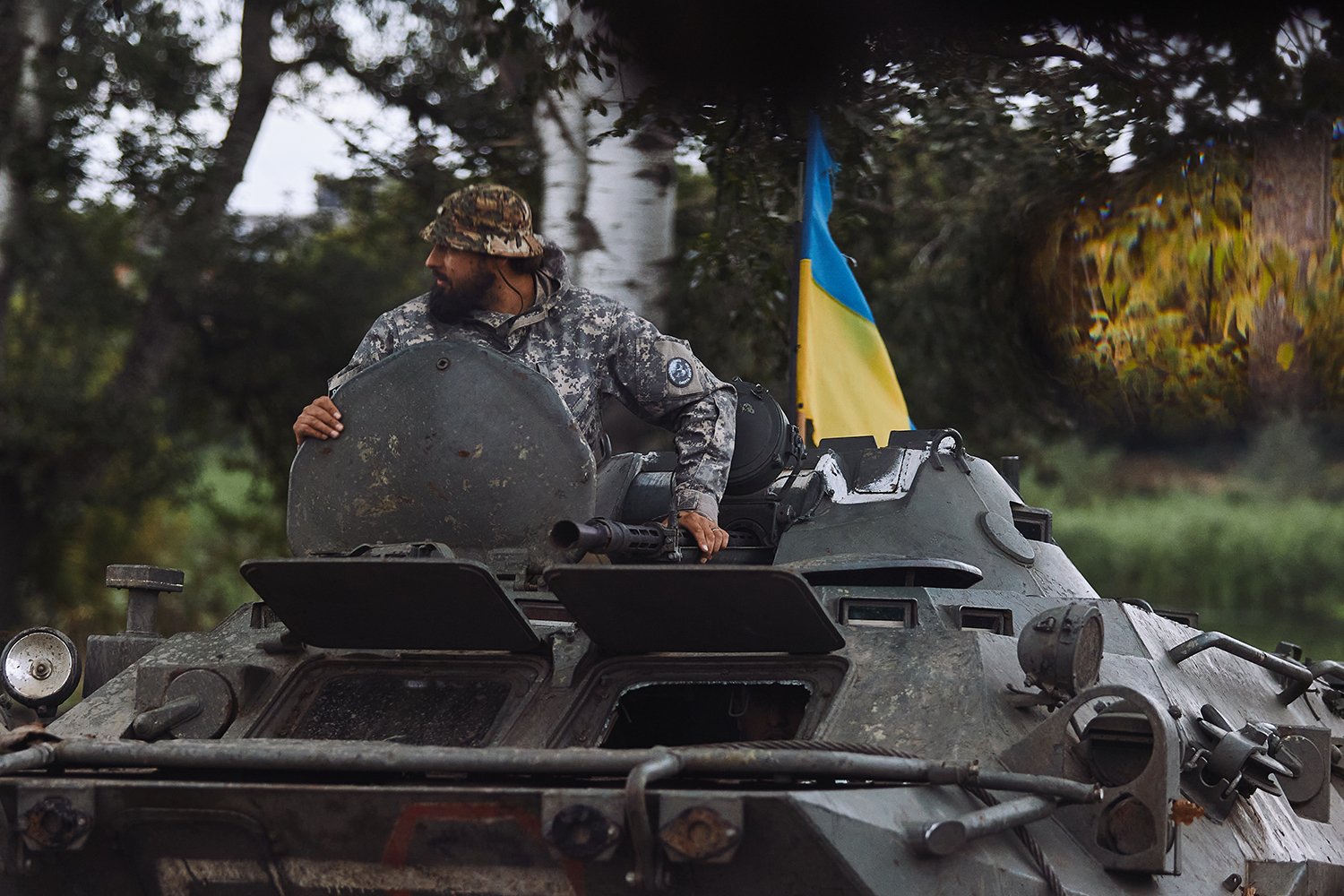
Photo: Victoria Iakymenko.
The harbinger of this hope flew over Izium as early as the summer of 2022. One day, while Mariia’s daughter was walking home, she suddenly saw a large folded piece of paper on the ground. When she picked it up, she realised that after six months of occupation, someone had thrown a paper aeroplane with the inscription “Izium is Ukraine.”
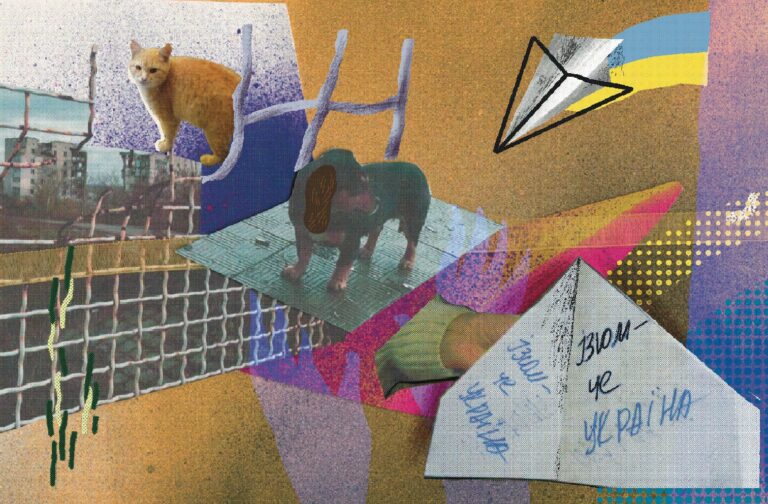
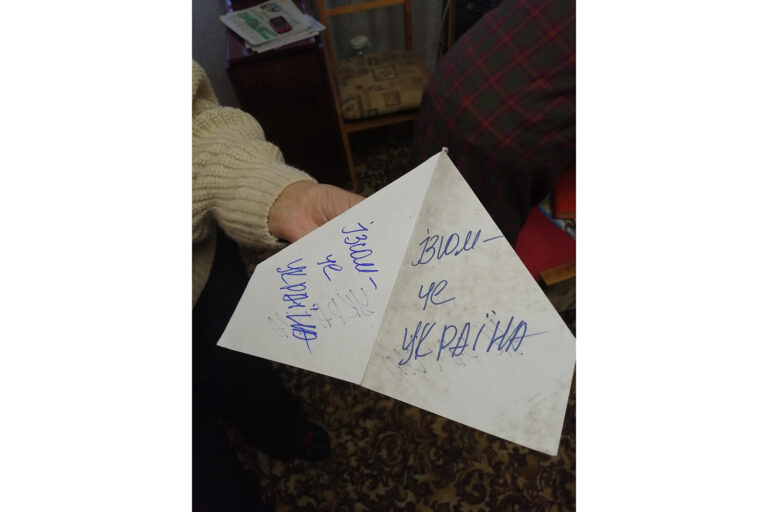
slideshow

